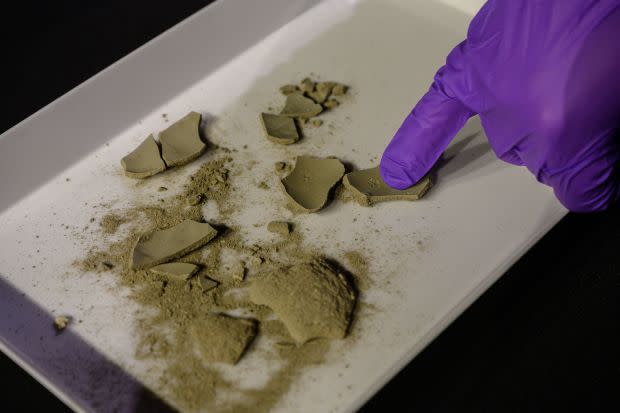West Point Time Capsule, Thought to be Empty, Ended Up Having Treasure Inside After All

All eyes have been on the U.S. Military Academy at West Point after a nearly 200-year-old time capsule was discovered underneath a monument on campus. On Aug. 28, the school held a live-streamed event where scientists and faculty watched with bated breath as West Point archaeologist Paul Hudson carefully opened the box. At first, all that appeared to be inside was some dirt, but it turns out there were time-worn treasures hidden in the box after all.
During the highly anticipated reveal event, Hudson awkwardly explained to the chuckling audience that the silt at the bottom of the container might contain some valuable objects, but it needed to be investigated further. "We don’t want to think they went to all the trouble to put this box in the monument and not put anything in it," he said of the cadets who buried the time capsule nearly two centuries ago.
After sifting through the dirt in the box, Hudson found six silver American coins dating from 1795 to 1828, as well as a commemorative medal. In total, he found a 1795 five-cent coin; an 1800 Liberty dollar; an 1818 25-cent coin; 10-cent and 1-cent coins from 1827; and an 1828 50-cent coin. The Erie Canal commemorative medal, created to mark the opening of the waterway, dates back to 1826.
“When I first found these, I thought, 'Man, you know, it would have been great to have found these on stage,'” Hudson told The Associated Press of his new discovery. "Before long, lo and behold, there’s the edge of a coin sticking out, and I thought, 'Well that’s OK. That’s something, that’s a start.'"
While on stage, he acknowledged that moisture seemingly seeped into the box, thereby possibly damaging any organic matter inside like paper or wood. In the end, it might have been better that he was able to properly dissect the chest's contents in the controlled setting of his lab.
Hudson's discovery supported West Point officials' theory that the box was left by cadets at the academy in 1828 or 1829 when the original monument honoring Revolutionary War hero Thaddeus Kosciuszko was completed. A group of five cadets, including 1829 graduate Robert E. Lee, were involved with the dedication of the monument.
According to the AP, the potential value of most of the coins could be anywhere from a couple hundred dollars to more than $1,000. But the historical information we might be able to glean from the box, Hudson believes, is priceless. “I think there’s more that we can learn from this," he said, "to learn about the academy’s history and about the country’s history."
